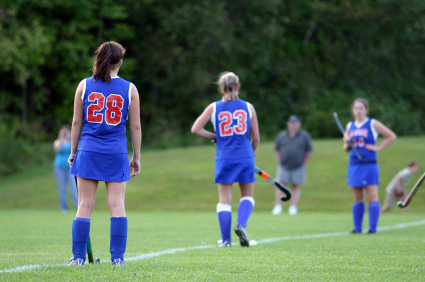 Female athletes playing sports that involve jumping and pivoting (basketball, soccer, volleyball, lacrosse) are at significantly greater risk of knee injuries, particularly to the anterior cruciate ligament (ACL), than male athletes.
Female athletes playing sports that involve jumping and pivoting (basketball, soccer, volleyball, lacrosse) are at significantly greater risk of knee injuries, particularly to the anterior cruciate ligament (ACL), than male athletes.
The injury rate disparity is even more pronounced when only noncontact ACL injuries are considered. ACL injuries often require surgery to repair, months of rehab, increased risk of degenerative arthritis and other long-term impairments, and exact a high physical, mental, emotional and economic cost.
A 2008 study reported in the American Journal of Sports Medicine,1 however, suggests that the ACL injury rate for female athletes, particularly non-contact ACL injuries, can be significantly reduced if the athlete follows a specific exercise program called the Prevent Injury and Enhance Performance (PEP) program before practices and games.
Designed in 1999 by a team of experts at the non-profit Santa Monica Orthopedic and Sports Medicine Research Foundation, the PEP program consists of a series of 19 warm-up, stretching, strengthening, plyometric, and sport-specific agility exercises that can be completed in less than 30 minutes without any specialized equipment.
Two studies of female soccer players show PEP benefit
The results of an earlier study of elite 14 to 18-year-old female club soccer players using the PEP exercise program, as reported in a 2005 issue of the American Journal of Sports Medicine,2 were promising: In the first year, ACL injuries went down 83% for girls on teams which used the PEP exercise program compared to girls on teams that did not; in the second year, the reduction in ACL injuries was 72%.
The results of the more recent study of NCAA Division 1 women soccer players conducted during fall 2002 NCAA soccer season and reported in the American Journal of Sports Medicine in 20081 confirms that female athletes were at significantly reduced risk of ACL injuries, particularly those of the non-contact variety, if they performed the PEP warm-up program 3 times a week over the course of a 12-week regular season.
Among the key findings of the 2008 study:
- Athletes with a history of previous ACL injury suffered ACL injuries at rate almost 5 times less than athletes not participating in PEP exercise program;
- The ACL injury rate for athletes without a history of prior ACL injury was approximately half for the PEP program participants;
- None of the female soccer players participating in the PEP program suffered an ACL injury during the second half of the season versus five who suffered such injuries who were not performing the PEP exercises.
- The reduction in ACL injury rates later in the season suggested that training had a cumulative benefit of the training. In fact, the study's authors suggested that the results may actually underestimate the program's potential impact because not all teams using PEP may have faithfully performed exercises.
Benefit beyond college soccer players
Although each of the teams using the PEP exercise program had a dedicated athletic training staff, the success reported in the earlier study in reducing ACL injuries among 14- to 18-year-old competitive female club soccer players - who ordinarily do not benefit from direct oversight from certified athletic trainers (ATCs) or physical therapists - suggest that the program may benefit other age groups and levels of play where direct oversight by medical professionals is far less common.
And, while the program was specifically designed with soccer-specific drills, it also may be modified for use in other high-risk team sports such as basketball, volleyball and girl's lacrosse.
For a web-based course on PEP for athletes, coaches, trainers and parents, click here.
1. Gilchrist J, Mandelbaum BR, Melancon H, Ryan GW, Silvers HJ, Giffen LY, et. al. A randomized controlled trial to prevent noncontact anterior cruciate ligament injury in female collegiate soccer players. Am J Sports Med 2008;36:1476-83.
2. Mandelbaum BR, Silvers HJ, et al. Effectiveness of a neuromuscular and proprioceptive training program in preventing anterior cruciate ligament injuries in female athletes. Am J Sports Med. 2005;33:1003-10.
Updated November 12, 2014








